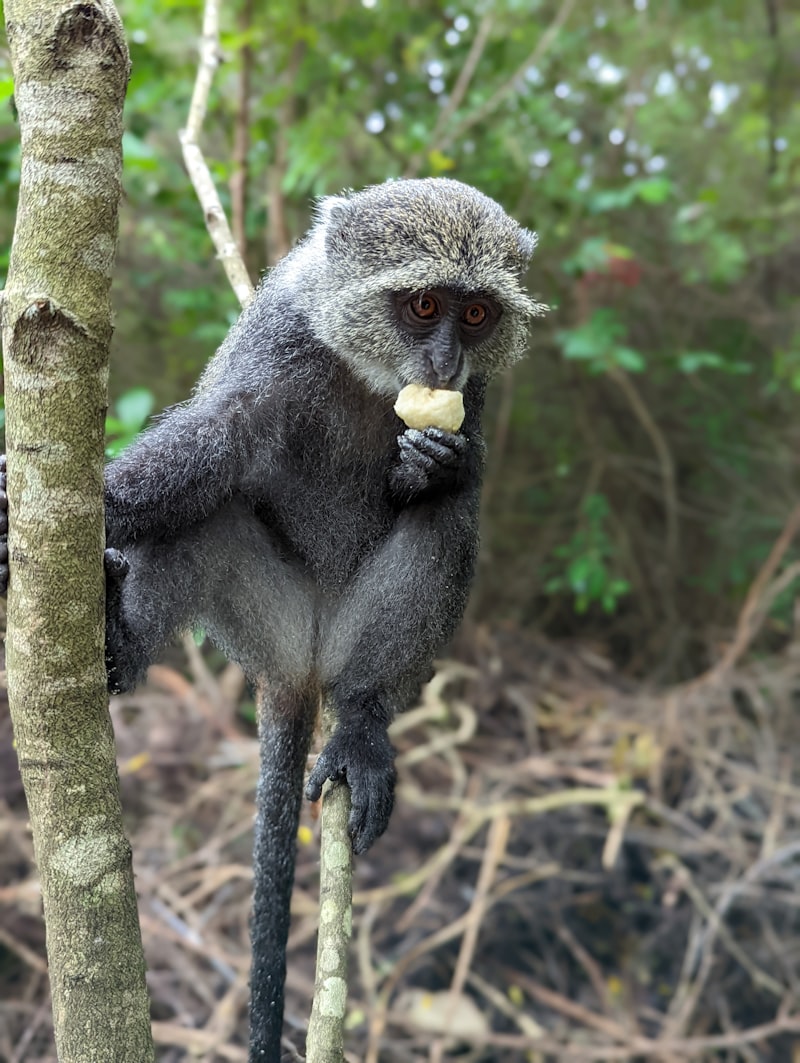In conservation biology, every species is like a unique story waiting to be told. Genomics provides the tools to read these stories with unprecedented detail. By studying the DNA of endangered species, scientists can uncover hidden aspects of their biology, such as genetic diversity and population structure. This knowledge is pivotal for designing effective conservation strategies tailored to each species’ needs.
Analogous to a master key, genomics unlocks doors to conservation challenges that traditional methods cannot. For instance, it helps identify individuals with unique genetic adaptations that could aid survival in changing environments. This understanding allows conservationists to prioritize efforts and allocate resources efficiently.
Moreover, genomics acts as a time machine of sorts, offering insights into the evolutionary history of species. By tracing genetic lineages, scientists can reconstruct how species have adapted and diversified over millennia. This knowledge not only enriches our understanding of biodiversity but also informs conservation practices by highlighting evolutionary resilience and vulnerabilities.
In the face of global environmental changes, genomics equips us with proactive tools to safeguard Earth’s biological treasures. It enables early detection of genetic threats like inbreeding or disease susceptibility, prompting timely intervention to prevent population declines.

Ultimately, the synergy between genomics and conservation biology underscores their shared goal: to ensure the persistence of life on Earth. As technology advances and our understanding deepens, these disciplines continue to evolve, offering hope and concrete solutions for preserving our natural heritage.
Unraveling Nature’s Code: How Genomics Shapes Conservation Biology
In conservation biology, genomics plays a pivotal role in understanding the genetic makeup of different species. Think of DNA as nature’s code — a complex sequence of molecules that contains instructions for everything a living organism does. By studying these genetic codes, scientists can grasp how species evolve, adapt, and survive in their environments.
Imagine you’re a detective investigating a mysterious case. Instead of footprints or fingerprints, you’re examining sequences of A, T, C, and G (the building blocks of DNA). Each species has its own unique DNA fingerprint, which tells a story of its evolutionary history and genetic diversity. This information is crucial for conservation efforts because it helps scientists identify endangered species, track their populations, and even predict their future challenges.
Genomics allows researchers to go beyond what meets the eye. It’s like having a superpower to peer into the smallest details of life itself. By analyzing DNA, scientists can uncover genes that make certain species resilient to diseases or capable of adapting to changing climates. This knowledge guides conservation strategies, enabling us to protect biodiversity more effectively.
But genomics isn’t just about understanding the present; it’s also about preserving the future. By conserving genetic diversity within species, we ensure their long-term survival. It’s akin to safeguarding pieces of a puzzle that we might need in the future to maintain ecological balance.
In essence, genomics is revolutionizing conservation biology by providing deeper insights into the intricate workings of nature. It’s like deciphering a centuries-old manuscript written by the Earth itself, revealing how life has evolved and continues to adapt in an ever-changing world. So next time you hear about genomics and conservation biology, remember that it’s more than just science — it’s a journey of discovery and preservation, unlocking the secrets that nature has woven into every living being.
Genomic Innovations Revolutionizing Wildlife Preservation
Genomic technologies, once reserved for laboratories, are now powerful tools in the conservationist’s arsenal. By deciphering an animal’s genetic code, researchers can pinpoint unique adaptations crucial for survival in their habitats. This intimate knowledge helps devise targeted conservation strategies, ensuring species thrive amidst environmental challenges.
Take the case of the black rhinoceros, a critically endangered species. Genomic studies have revealed genetic variations that contribute to disease resistance and reproductive success. Armed with this information, conservationists can selectively breed individuals to bolster these traits, enhancing the species’ resilience against threats like poaching and habitat loss.
Furthermore, genomics plays a pivotal role in understanding population dynamics. By analyzing DNA samples from diverse populations, scientists can trace lineage, identify genetic bottlenecks, and assess levels of inbreeding. This insight aids in managing genetic diversity, a cornerstone of sustainable wildlife conservation.
Consider the analogy of a puzzle—each DNA sequence a piece that, when assembled, forms a comprehensive picture of biodiversity. Genomic innovations act as the glue that binds these pieces together, illuminating paths to conservation success previously obscured.
The application of genomics isn’t limited to land-dwelling species alone. Marine biologists are utilizing environmental DNA (eDNA) to monitor aquatic ecosystems non-invasively. By detecting traces of genetic material left behind by marine organisms, scientists can map biodiversity hotspots and track elusive species like the elusive giant squid.
From DNA Sequences to Species Survival: The Role of Genomics in Conservation
Imagine genomics as a sophisticated map, revealing intricate details of each species’ genetic blueprint. By deciphering DNA sequences, scientists can unravel the secrets embedded in the genomes of endangered species. This knowledge allows conservationists to assess genetic health, identify unique adaptations, and even trace migration patterns over millennia.
Genomics doesn’t just stop at decoding DNA; it offers a dynamic lens into the past, present, and future of biodiversity. By comparing genetic data across populations, researchers can pinpoint vulnerable genetic variations and prioritize conservation efforts where they are most needed. This proactive approach helps mitigate the impacts of habitat loss, climate change, and other threats facing wildlife today.
Moreover, genomics acts as a guiding compass in conservation breeding programs. By selecting individuals with diverse genetic backgrounds, scientists can enhance the resilience of captive populations and reintroduce genetically robust individuals into the wild. This strategy not only bolsters population numbers but also ensures that genetic diversity thrives, critical for long-term species survival.
In essence, genomics reshapes our conservation landscape by offering unprecedented insights into the genetic foundations of life. It empowers scientists to make informed decisions, steering conservation efforts towards sustainability and resilience. As we delve deeper into the genomic treasure trove, each DNA sequence becomes a testament to the intricate web of life and a beacon of hope for future generations.
Preserving Biodiversity: Genomics’ New Frontier in Conservation

By sequencing the genomes of threatened species, scientists can delve deep into their DNA, uncovering valuable insights into their evolutionary history and genetic diversity. This information is vital for developing effective conservation strategies tailored to each species’ unique genetic profile. Just as a skilled artisan meticulously restores a delicate masterpiece, genomics allows conservationists to tailor their efforts with precision, ensuring maximum impact.
Moreover, genomics empowers researchers to identify genes responsible for key traits such as disease resistance or tolerance to environmental changes. This knowledge enables targeted breeding programs aimed at bolstering population resilience. It’s akin to unlocking a treasure trove of biological blueprints, each containing clues to enhancing species survival in a changing world.
But genomics isn’t just about individual species—it’s about ecosystems as a whole. Understanding the genetic interactions between species within an ecosystem provides invaluable insights into their interconnectedness and resilience. It’s like deciphering a complex puzzle where each piece contributes to the overall picture of biodiversity conservation.
In essence, genomics represents a new frontier in conservation, where science and nature converge to safeguard our planet’s biological richness. As we navigate the challenges of a rapidly changing environment, harnessing the power of genomics offers hope for a future where endangered species thrive and ecosystems flourish. It’s a journey into the very essence of life itself, where every discovery brings us closer to preserving the intricate tapestry of life on Earth.
Frequently Asked Questions
What are the applications of genomics in wildlife conservation?
Discover how genomics is applied to wildlife conservation, from understanding genetic diversity to aiding in species identification and combating diseases. Learn how DNA analysis helps in creating effective conservation strategies and ensures the survival of endangered species.
What role does genomics play in conservation biology?
Genomics plays a crucial role in conservation biology by providing insights into genetic diversity, population structure, and adaptive potential of species. This information helps conservationists make informed decisions for preserving endangered species, managing populations, and restoring ecosystems.
How do scientists use genomics to study population dynamics in wildlife?
Learn how scientists leverage genomics to investigate population changes in wildlife, exploring genetic diversity, adaptation, and conservation strategies.
How can genomic data help in endangered species conservation?
Learn how genomic data aids in conserving endangered species by providing crucial insights into genetic diversity, population dynamics, and adaptive traits, guiding effective conservation strategies.
Why is genetic diversity important in conservation biology?
Genetic diversity is crucial in conservation biology as it ensures species resilience against environmental changes, diseases, and other threats. It promotes adaptability and sustainable populations, essential for long-term survival.



